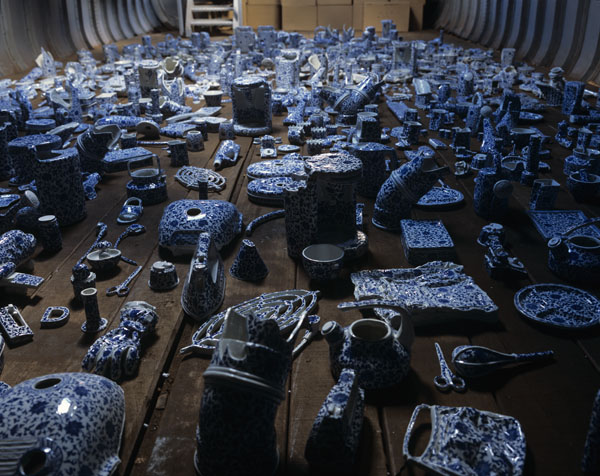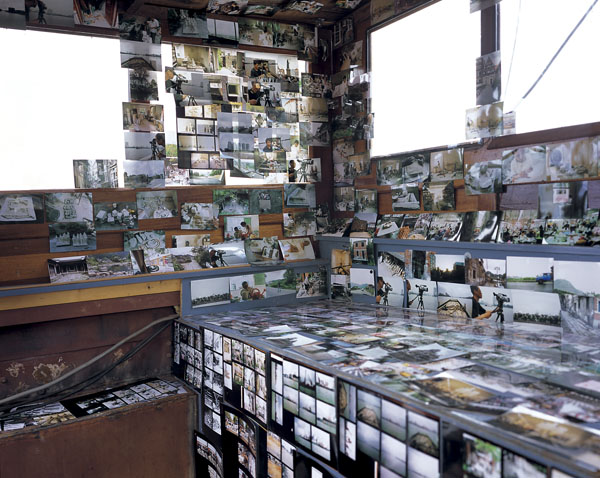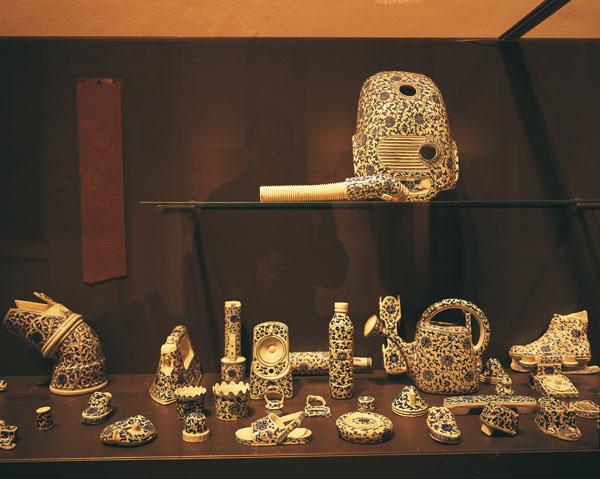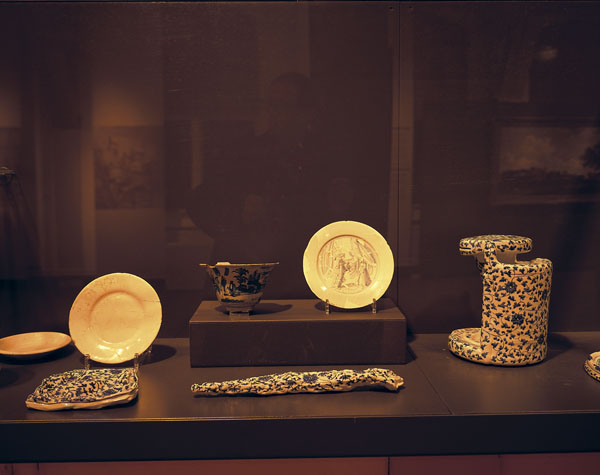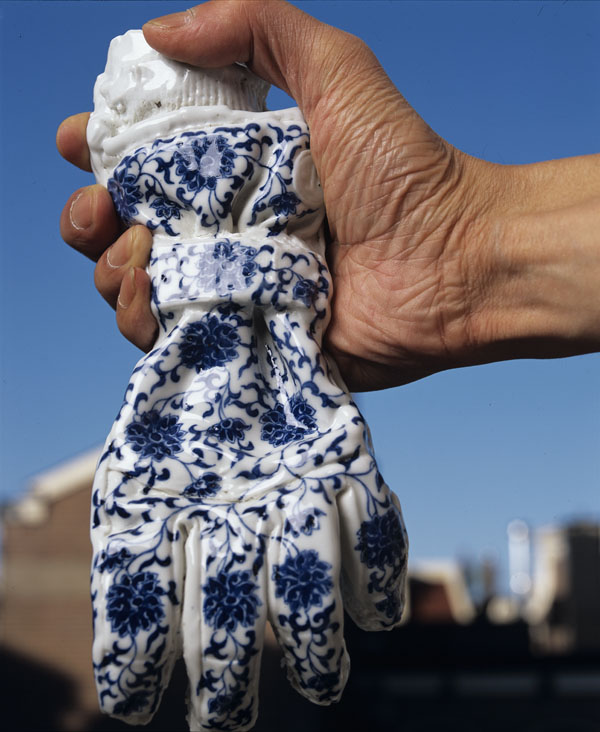
Of the Departure and the Arrival
Of the Departure and the Arrival
The Project Proposal
When asked to make a proposal for the project Beyond the Wall, I immediately thought of Delft’s past and VOC. Delft is a very beautiful city with a rich history that has remained a constant part of the city’s landscape through to the present day. The history is ever present in the streets of the old town, in the pervasive historical sites, and in its everyday life. I thought it would be better to do a project that utilizes the city and its past as a context, or as an integral part of the project, rather than to make a work that represents them. As a Chinese migrant living in the Netherlands, naturally I am interested in the relationship it had with China, and in bringing ‘otherness’ to ‘here’. Delft is renowned for its Royal Delft Blue Ware, while in China there is a town known for its porcelain ware, Jingdezhen, the City of Porcelain as it is called in China, whose products constituted the better part of the VOC’s import of Chinese porcelain ware in 17th and 18th centuries. Delft blue is omnipresent in Delft, so much so that it has become a cliche, so is porcelain that has become a platitude in the national representation of China’s cultural heritage. From this line of thoughts, I think it’s interesting to adopt an ironical stance and make the project as one that adds a great amount of ‘strange blue earthen ware’ to the already platitudinous ‘landscape of blue’.
My project will start with collecting everyday objects in Delft, objects that reflect life and characteristics of the city. It is not unlike gathering ethnological evidence of the Delft population, a practice that is widely employed in anthropology to chart the ‘unknown territory’ of the other, only, here, the anthropological gaze is reversed and redirected at ‘us’. So, the act could be regarded as a mimic and mockery of the anthropological methodology. I will then remake those collected objects as earthenware with porcelain or Delft Blue motifs on them, in the above mentioned Chinese porcelain town, Jingdezhen. Those objects should be different, both in shape or function, from either porcelain or Delft Blue products, so that when remodeled into porcelain ware they appear strange. Subsequently, the remodeled strange earthenware will be imported back to Delft through an international shipping company. The objects collected in Delft will first be sent to China and then be transformed and sent back to Delft, the process of which is reminiscent of the porcelain trade, the practice of China de Command and VOC economic-politics of the old days.
The above-mentioned process will be documented by video recording and I will then edit the video material into two separate video streams that will later be shown beside each other. One video will be the main chronological narrative of the process and the other will function as an alternative narrative that provides a comparative reading of the main story line. The alternative narrative will appear as non-chronological and in a quick cut mode, in which, the sequence will alternate between, scenes of cruising alone China’s southern coastal areas where VOC fleets once moored, scenes of moving through the aforementioned porcelain city, and the land and the water routes of the historical VOC trade within the “middle kingdom”. Re-navigating, it might be called, through the ‘once navigated territory of the unknown”. Thus both of the narratives combine to function as a dual temporality of a contemporary tale of two places and a guide to the viewers navigating through the time-space of both the present and the historical. These, however, remain details that will be worked out after gathering all necessary video footage.
As though to reconstruct an historical moment as a contemporary fiction or to historicize contemporary life as a phantasmagorical reappearance of the past, both the videos and the objects will be staged for the public on a boat docked on the canal between the old VOC house and the weapons museum, both of which have profound and complex historical significance. The boat and the location are themselves metaphors that can create, in viewers, a mantel space for contemplation. So, one day, a viewer sees a boat strangely appeared in the heart of the city, as if the old seaport (Delfshaven) has been restored to unload the newly arrived ‘foreign goods’. He (she) has to enter the boat in order to see the goods and hear the tale of the two places, and he (she) might find the objects familiar yet un-definable, only after seeing the video, will he (she) realize that the objects, after all, originated in Delft.
The boat should be of a moderately large size, or of a strange type that to some extend contradicts the peaceful landscape of Delft. It is ideal to have several compartments in the hull of the boat. In one compartment, the porcelain objects will be presented among the original packing crates, perhaps many of them, as if ‘goods in bulk’ have just arrived. I will construct another compartment, if there is any, into an obscure empty space with only the sound of the sea and storm faintly audible through a loudspeakers system. Two monitors will be installed side by side in the cockpit, against the windscreen, among the steering wheel and other navigation devices, and the above-mentioned videos will be displayed therein. So, while being in the cockpit, looking at the landscape through the windscreen and the videos in front of them, the viewers will be navigating, literally as well as metaphorically.
So, the project consists of multiple components: the process, the objects, the videos, the boat and the location, which are all subtly interwoven into a whole, and it appropriates the city and its history as ready-made to elicit public imaginations. As the work is merged into the heart of the city, the process of viewing the work can be equated to that of reviewing the city and navigating the beyond to navigating the history of Delft. By bringing the “foreign goods” for a second time as the reoccurrence of a historical event, I want to register the complexity of the historicity within the present moment. That is to say that the past has never departed and the history will always be a contemporary re-writing. Since the project hinges on the dialectic of import and export, which still constitutes the contemporary scenario of cultural-economic domination and survival and hence the power structure of the global era, what is Buiten de Muren is remixed into the little Delft and Delft is reloaded onto the globe. Delft is made wall-less, or perhaps, Delft has never had a wall. Delft is after all, like the ‘old good Europe’, a part of the world that is constantly changing.
Ni Haifeng, 20 April, 2004


